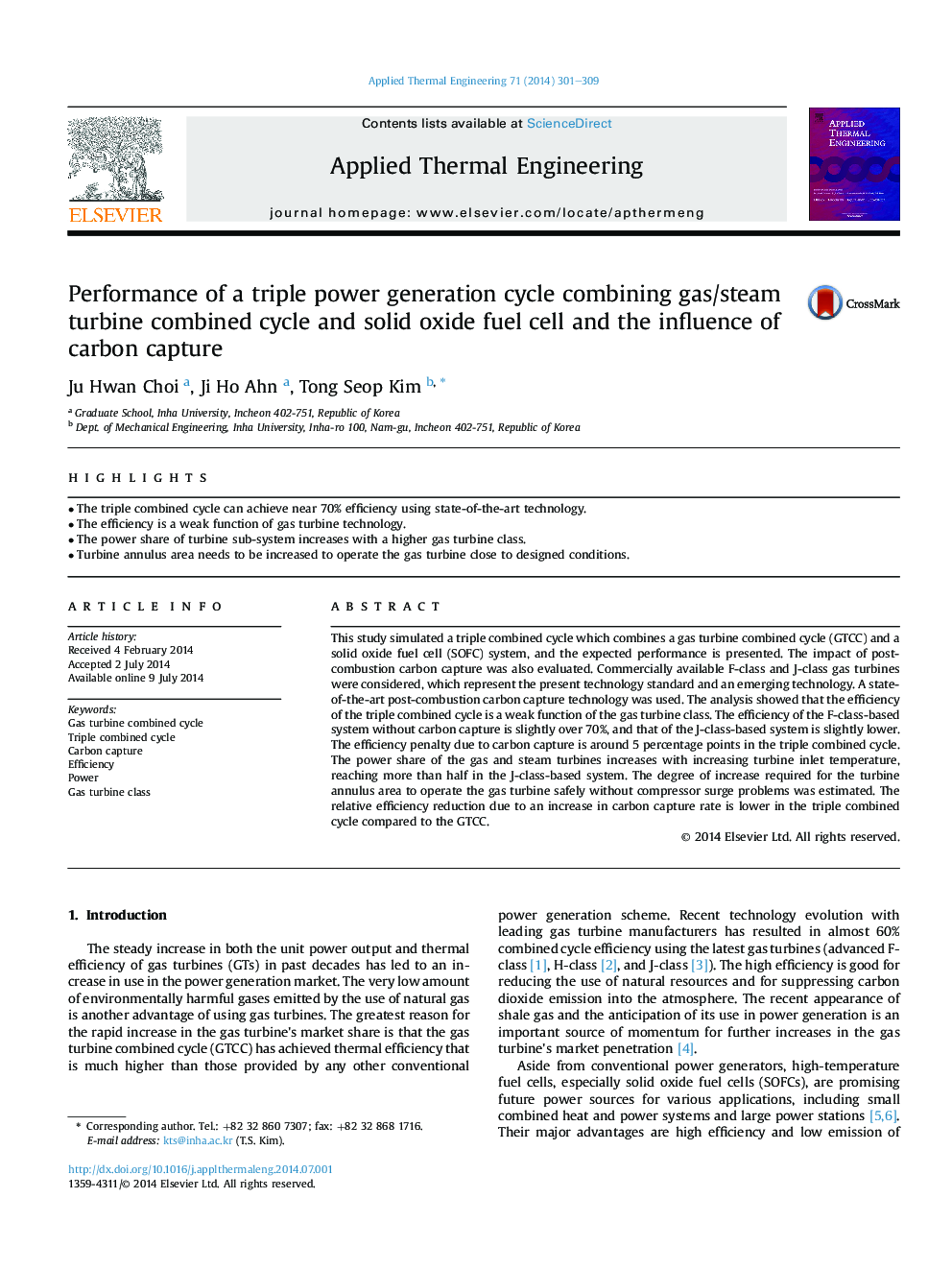| Article ID | Journal | Published Year | Pages | File Type |
|---|---|---|---|---|
| 646108 | Applied Thermal Engineering | 2014 | 9 Pages |
Abstract
This study simulated a triple combined cycle which combines a gas turbine combined cycle (GTCC) and a solid oxide fuel cell (SOFC) system, and the expected performance is presented. The impact of post-combustion carbon capture was also evaluated. Commercially available F-class and J-class gas turbines were considered, which represent the present technology standard and an emerging technology. A state-of-the-art post-combustion carbon capture technology was used. The analysis showed that the efficiency of the triple combined cycle is a weak function of the gas turbine class. The efficiency of the F-class-based system without carbon capture is slightly over 70%, and that of the J-class-based system is slightly lower. The efficiency penalty due to carbon capture is around 5 percentage points in the triple combined cycle. The power share of the gas and steam turbines increases with increasing turbine inlet temperature, reaching more than half in the J-class-based system. The degree of increase required for the turbine annulus area to operate the gas turbine safely without compressor surge problems was estimated. The relative efficiency reduction due to an increase in carbon capture rate is lower in the triple combined cycle compared to the GTCC.
Related Topics
Physical Sciences and Engineering
Chemical Engineering
Fluid Flow and Transfer Processes
Authors
Ju Hwan Choi, Ji Ho Ahn, Tong Seop Kim,
